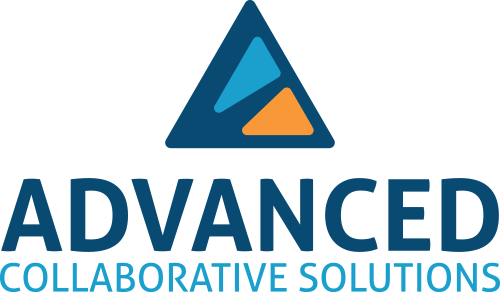Defining Your Leadership Vision

By: Steve Ventura
Principals play a vital role in the education world, without a doubt, and they are constantly seeking ways to improve their schools. But those without a clear leadership vision can easily fall victim to the latest fads and programs that promise to solve all of their problems. The sad reality is schools and districts continue to invest millions of dollars each year into purchasing programs designed to increase student achievement, only to see these programs wind up in the graveyard of good intentions—the filing cabinet.
Effective instructional leadership depends less on "programs" and more on professional practice rooted in a clear vision. Today’s principals are expected to break down academic, social, and economic barriers to create ideal conditions for learning. Before tackling such important and, oftentimes, daunting work, principals must create and share their leadership vision in a way that inspires positive action. This vision, when thoughtfully constructed and recalibrated, serves as the guiding light for teams in pursuit of students’ academic growth. Let’s hone in on what makes a strong leadership vision, how to create your vision, and how to get and keep people on board with that vision.
What Makes a Leadership Vision Effective?
Gallup research shows that only 13% of U.S. employees strongly agree the leadership of their organization communicates effectively with the rest of the organization. Only 15% strongly agree the leadership of their organization makes them feel enthusiastic about the future. One in three employees is engaged. A vision that defines your hopes and expectations, acknowledges the current reality, and describes the path forward is the linchpin of organizational success and employee engagement. A strong vision is:
- Relevant to all stakeholders: Ensure there are access points for major stakeholder groups (teachers, staff, parents and families, and students) within your vision. How does your vision show up in the day-to-day actions of the typical member of your community and how do those actions vary based upon which stakeholder group someone is part of? Additionally, allow your vision to evolve with your team, yourself, and the data.
- Reflective of community input: Your employees and stakeholders crave a leadership vision that reflects their own goals and dreams. Solicit input from others and make your vision creation process a collaborative one.
- Future oriented: Identify what your team should be striving toward within a year or a few years. Visualize that ideal state clearly in order to orient everyone else in that direction.
- Action driven: Ensure your vision is part of the fabric of your organization, not just a quick talking point for special events. Don’t only bring up your vision at beginning of year orientation. Bring it up in conversations, regular meetings, presentations, whenever possible. Call out moments when organizational or individual actions align with the vision and celebrate small wins. Display your vision in your office, staff lounge, and website.
Must-Have’s for an Effective Principal Vision
Prioritize everything and you prioritize nothing, as the old adage goes. Principals have countless tasks, responsibilities, and initiatives on their plates. How is one to decide what’s most important? If all else fails, ensure that your leadership vision leaves room for the below five practices. These practices, identified by Viviane Robinson and colleagues, have the greatest effect size in positively impacting student achievement.
- Resourcing strategically - Prioritize initiatives and eliminate ineffective practices; align current resources with high-leverage goals and strategies
- Ensuring an orderly and supportive environment - Ensure consistent and fair discipline, reduce classroom interruptions, and foster a school community that is safe and supportive
- Planning, coordinating, and evaluating teaching and the curriculum - Actively engage in collegial discussion about instruction, including its impact on student achievement; observe, monitor, and encourage effective instruction
- Promoting and participating in teacher learning and development - Actively participate in learning WITH teachers to increase leader influence and respect from staff
- Establishing goals and expectations - Set and reinforce goals that are appropriately challenging and have a clear link to improving student outcomes
Take a moment and reflect on your current leadership capacity in these five areas. On a scale of 1 to 5, where are you currently in your leadership practice and what is one action you can take this week to make progress in each area?
1 - Needs significant improvement
2 - Could benefit from development
3 - Capable and effective
4 - Very capable and effective
5 - Role model; could train others in this area
If you can allot most of your time to those five focuses as a principal, as well as make these priorities clear to your team and teachers, you are setting yourself up for a laser-focused year. Consider how you can ask others to hold you accountable to the action steps you identified above and weave them into your leadership development plan this year.
On the flip side, beware of the ten behaviors of the most uninspiring leaders. Sometimes, when creating a vision, it’s helpful to spell out what you do NOT want to be or do. Set your leadership compass in the opposite direction of these ten actions:
- Lack of energy or enthusiasm
- Rarely provide clarity or direction
- Avoid setting challenging goals
- No plan for personal development
- Provide no coaching or mentoring
- Keep critical information to themselves
- Say one thing and do another
- Encourage conflict or competition with others in the organization
- Have little or no interest in ideas or input from employees
- Rarely provide helpful feedback on performance
Getting Started with Your Leadership Vision
So now you know five areas that, when prioritized in your leadership vision, will put you and your team on the path toward success. As you begin to articulate your vision in a way that you can confidently share with others, how can you involve valued teammates and their constructive criticism in your vision creation process? While it can feel vulnerable to open yourself up to evaluation, there are numerous benefits to soliciting feedback from colleagues. Gather feedback from staff members and other stakeholders to improve your leadership. This could take the format of informal check-ins, anonymous 360 evaluations, or other regularly administered surveys. From there, focus your efforts on high-impact leadership moves rooted in evidence-based practices. Make your vision a living part of your day-to-day work. With the right people at your side and the right focus driving daily decision-making, you are bound for success.
Looking for more guidance in crafting your leadership vision? I’m working on a book to serve as an atlas for school building leaders that will be full of actionable steps principals and leaders can take to strengthen their focus and improve their leadership. Subscribe to our mailing list (in the footer below) so you can be the first to know when it’s released! In the meantime, get in touch with us and let’s talk about how we can enhance your leadership together.

